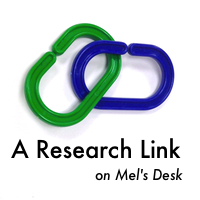
A few years ago a study was released that looked at teachers in ECE classrooms and their strategies for reading books to their students during circle time. The teachers were trained on print awareness concepts and asked to incorporate very brief comments about the print on the page into their daily reading. These actions were designed to gradually draw their students’ attention to print by pointing to letters in the title on the book cover, by underlining with their finger certain words on the page as they read, or by pointing out any text within illustrations.
The study found that when teachers did these very brief activities as they read, their students became much more attuned to print concepts, and two years later, “[c]ontrolling for fall of preschool emergent literacy skills, children in the high-dose STAR condition had higher word reading, spelling, and comprehension outcomes than children in the comparison condition.” (see highlighted quote; scroll down)
These print concepts are critical pre-reading skills because a child can’t begin to sound out a word on a page unless they understand that those squiggles are there for a reason, that they are separate from the illustrations, that they are organized in certain ways, and that they represent the words and the sounds we say when we talk. Children who spend hours and hours reading books with their parents and caregivers have lots of time to absorb these ideas, but children with less reading experience have less exposure and less knowledge about print when they enter the classroom. This study is encouraging because it shows that deliberate and regular–and simple and quick–practice can help children build their awareness of print and how it works.
Many storytime providers naturally engage in these types of behaviors! Even though this deliberate attention to print is something we already see often in storytime, I used this research as the basis of one of our recommended early literacy activities and messages that are shared with our staff. The face that helping preschoolers pay attention to print does have an impact on their pre-reading skills might seem like a given. However the more informed and intentional we can be about modeling great early literacy practices during storytime, the more we can serve as conduits of hands-on early literacy information to our families–either in storytime, during readers’ advisory, or in casual conversation.
Links:
Increasing Young Children’s Contact With Print During Shared Reading: Longitudinal Effects on Literacy Achievement [full article online]
WWC Review of the Report “Increasing Young Children’s Contact with Print During Shared Reading: Longitudinal Effects on Literacy Achievement” [A 1-page pdf overview from the What Works Clearinghouse of the Institute of Education Sciences]
Small Change In Reading To Preschoolers Can Help Disadvantaged Kids Catch Up [NPR article 5/29/12]
And thanks to the ALSC Blog who tweeted a link to this Psychology Today article last week the day after I drafted this post! It doesn’t refer to the study, but it does talk about learning to recognize print separately from illustrations: How Do Children Learn to Recognize Print? [Psychology Today article 10/6/15]


.jpg)
